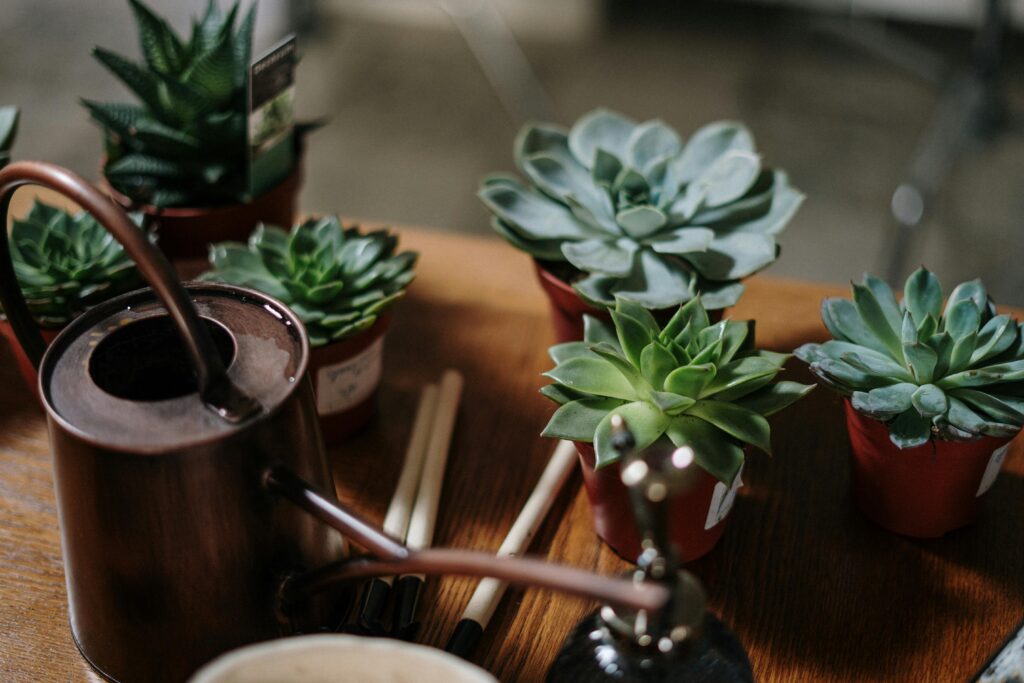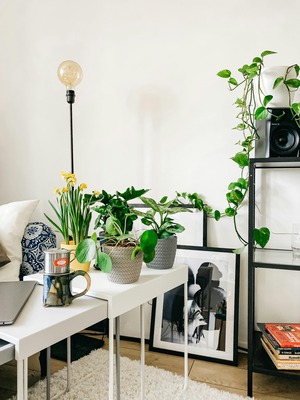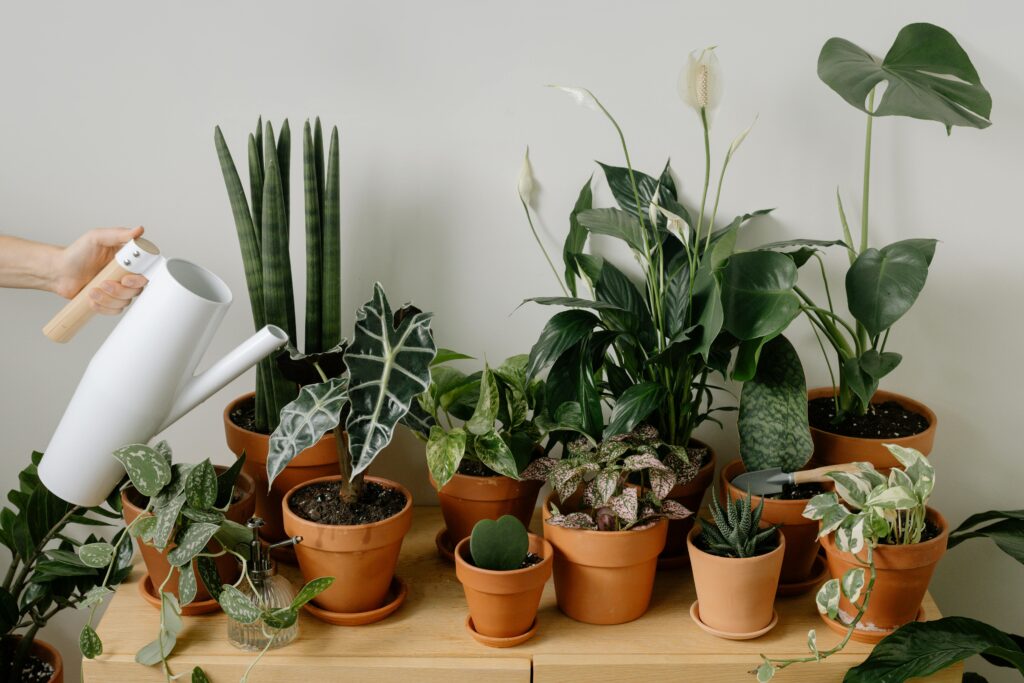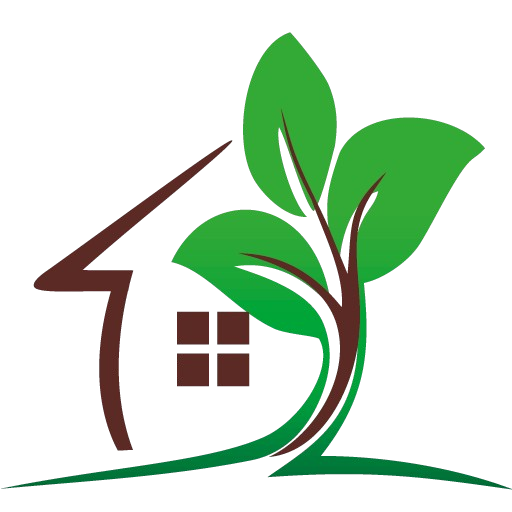Struggling to add greenery to your small apartment? Indoor gardening in small spaces is important for a few reasons. First, it helps you use even the smallest areas to grow plants, turning them into nice green spots. This can make your home feel more lively and welcoming.
Plus, having plants around can make you feel closer to nature, which can lower stress and improve your mood. If you pick and arrange your plants carefully, you can enjoy all these benefits without making your space feel crowded.

Benefits of Indoor Gardening in Small Spaces
Indoor gardening in small spaces has many great benefits:
Cleans the Air:
Some indoor plants can act like natural air cleaners. They take out harmful chemicals and make the air fresher. This is really helpful in small spaces where the air might not flow as well.
Helps You Feel Better:
Having plants around can lower stress and make you feel happier. In a small space, plants give you a connection to nature, making your home feel peaceful and relaxing.
Grows Fresh Food:
Even if your space is small, you can still grow herbs and vegetables indoors. This lets you use fresh ingredients when cooking and helps you live in a more eco-friendly way, even in the city.
Choosing the Right Plants for Small Spaces
For small spaces, picking easy-to-care-for and space-saving plants is important to grow a nice indoor garden without taking up too much room. Here are some good choices:
Spider Plant: The spider plant helps clean the air and is super easy to care for. You can hang it in a small pot or put it on a shelf.
Succulents: Plants like aloe vera, echeveria, and haworthia are perfect for small spaces. They don’t need much water and grow well in bright, indirect sunlight.
Pothos: Pothos is a trailing plant that can be hung in baskets or trained to climb a small trellis. It’s very easy to care for and can grow in low light.
Herbs: Small herbs like basil, mint, and thyme can grow in pots on your kitchen counter or windowsill. They’re easy to take care of and give you fresh ingredients for cooking.
ZZ Plant: The ZZ plant is super tough, grows in low light, and doesn’t need much water.

These plants don’t just fit well in small spaces, they’re also easy to care for, which makes them perfect for busy people.
Maximizing Space with Vertical Gardening
When you’re gardening in small spaces, using vertical space is really helpful. Trellises, shelves, and wall-mounted planters are great tools to grow more plants without taking up much floor space.
Trellises
A trellis helps climbing plants grow up instead of spreading out. This is great when you don’t have much room on the ground. Plants like pothos, ivy, or even beans and peas can grow on a trellis, making a beautiful green wall.
Shelves
Adding shelves to your garden lets you put plants at different heights. This keeps them off the ground and helps them get enough light. You can use floating shelves, tiered shelves, or corner shelves to hold small plants, succulents, or trailing vines.
Wall-Mounted Planters

Wall-mounted planters are perfect for turning empty walls into green spaces. These planters can hold small pots, herbs, or succulents, using the vertical space that usually goes unused. You can find simple or more complex styles with several levels to grow lots of plants.
Advantages of Vertical Gardening Tools
Saves Space: Growing plants vertically helps free up floor space, making your small area feel more open and less crowded.
Better Light: Plants on shelves or trellises can get better sunlight, especially when placed near windows or other light sources.
Looks Great: Vertical gardening tools like trellises, shelves, and wall planters add height and make your indoor garden look more interesting and beautiful.
Using these tools allows you to grow more plants in less space, making your small home greener and more cheerful.
Container Gardening for Small Spaces
Choosing the right pots is important when gardening indoors in small spaces. The right containers can help your plants grow better and make your home look nicer.
Picking the Right Pots and Containers
Small Pots for Small Spaces: Use small pots for herbs and compact plants that can fit on windowsills or shelves. Make sure the pot isn’t too big, or you might overwater your plant.
Nesting Pots: These stackable pots save space and let you grow many plants in a small area.

Materials:
Plastic Pots: Lightweight and affordable, plastic pots keep moisture well and are great for plants that need regular watering. Just make sure they have holes for drainage.
Terracotta Pots: These allow air to reach the roots, which is good for plants like succulents. But they’re heavier and might crack easily, so be careful if you plan to move them around a lot.
Common Mistakes to Avoid in Small Space Gardening
Overcrowding:
Problem: Planting too many plants in a small area can cause problems. Plants need room for their roots and airflow. Overcrowding can lead to mold and pests.
Solution: Choose slow-growing or compact plants that don’t need a lot of space.
Overwatering:
Problem: Overwatering is a common mistake in small-space gardening. Too much water can cause the roots to rot, especially in containers without proper drainage.
Solution: Check if the top inch of soil is dry before watering. If it’s still moist, wait before adding more water.
Conclusion
Growing a garden indoors in a small space takes smart planning. Here’s a quick summary:
- Choose plants that are small and easy to care for.
- Use vertical gardening tools like shelves and trellises to save space.
- Pick the right pots that have good drainage and are the right size for your plants.
- Give each plant enough space to grow.
- Be careful not to overwater your plants, and make sure they have enough light.
With these tips, you’re ready to create a beautiful indoor garden, no matter how small your space is. Start small, experiment, and watch your plants grow!
FAQs
What are the best plants for indoor gardening?
Answer: The best plants for small spaces include succulents, spider plants, pothos, ZZ plants, and herbs like basil, mint, and thyme. These are easy to care for and can grow in low light.
How can I save space in a small indoor garden?
Answer: Use vertical gardening tools like trellises, wall planters, and shelves. You can also use hanging pots or stackable containers to fit more plants in a small area.
What kind of soil should I use for indoor plants?
Answer: Use a high-quality potting mix for indoor plants. For succulents and cacti, choose a special cactus mix that drains well. Herbs and vegetables need nutrient-rich soil.
How often should I water my indoor plants?
Answer: Water your plants when the top inch of soil feels dry. Be careful not to overwater, as this is a common mistake in small-space gardening.
How can I make sure my plants get enough light?
Answer: Place your plants near windows that get natural light, and turn them regularly to make sure all sides get light. If needed, use LED grow lights to help your plants thrive.
